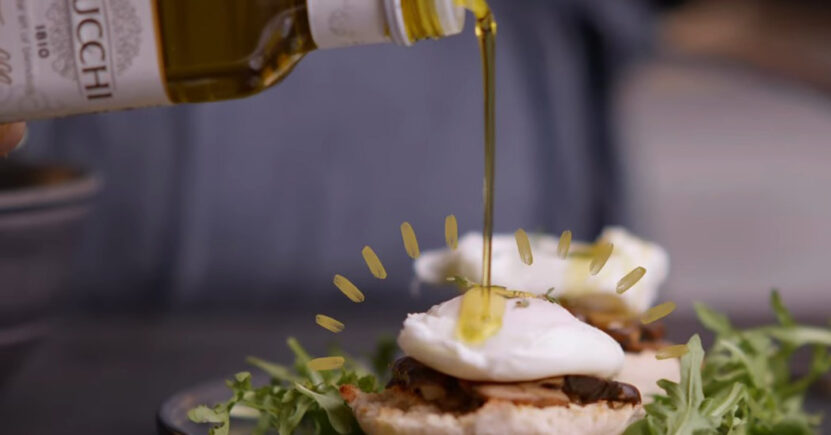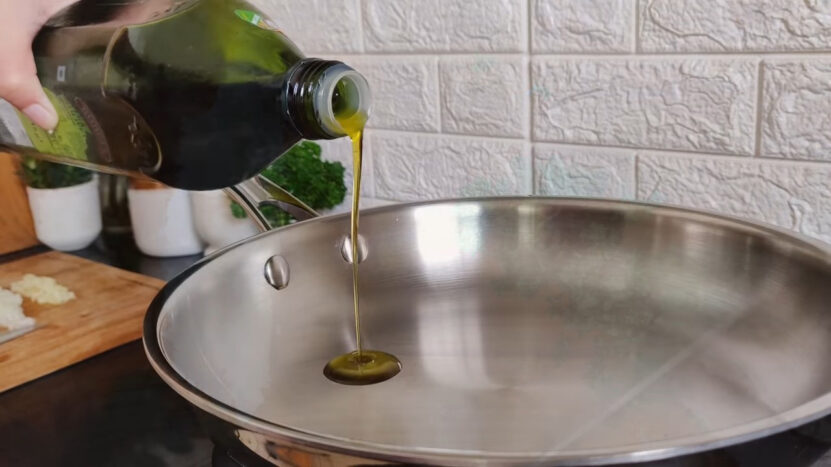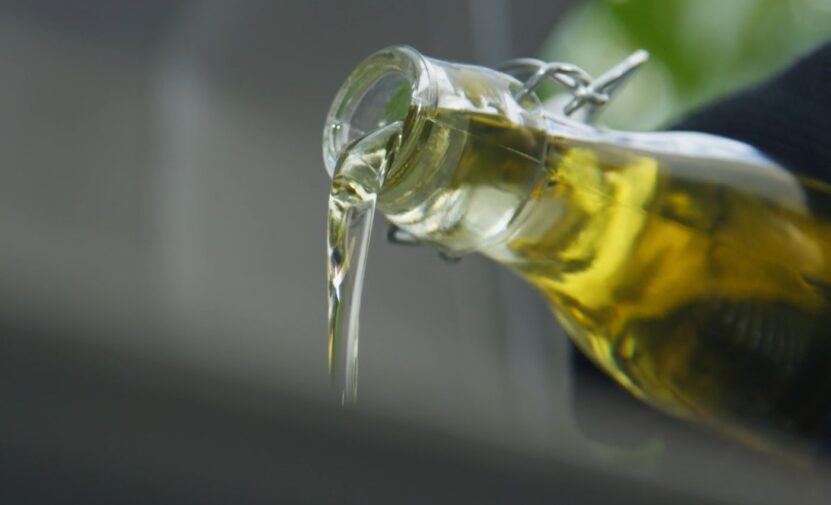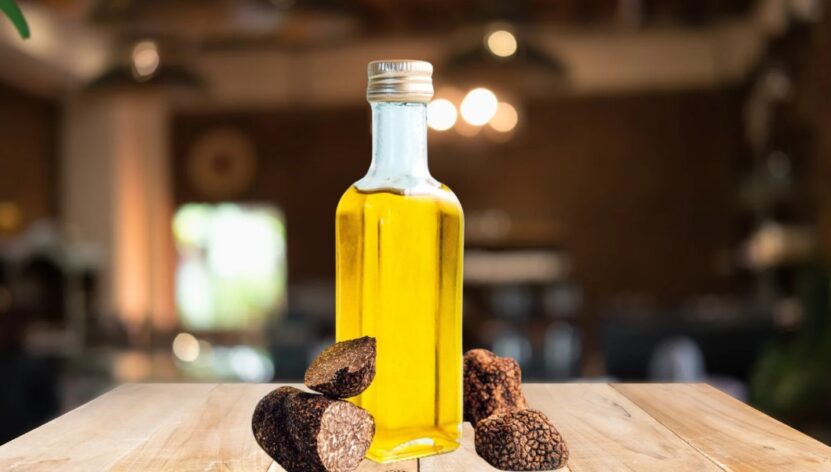Fellow foodies, I’m here to share a little secret from my kitchen to yours—truffle oil. Now, I’ve been around the block a few times with my cooking, and let me tell you, truffle oil is like that dash of magic that can transform a simple dish into something extraordinary. It’s all about knowing just the right moment to let its earthy aroma do the trick.
Stick around because I’m about to show you how to use this incredibly versatile ingredient to take your meals to a whole new level. Trust me, with a touch of truffle oil, you’ll be able to impress even the toughest critics at your dinner table. Are you ready?
When to Use It?

While I typically use it as a finish for dishes, this oil should not be used for sautéing or cooking with high heat as the flavor is easily diminished when exposed to extreme temperatures.
I overheard the latter type being referred to as “truffle aromatics.” This variation is preferred for commercial use because it is more cost-effective than the real thing. Whichever type you choose, beware of any product labeled only “truffle essence,” as this is just flavoring and doesn’t actually contain any truffle whatsoever.
Instead, use truffle oil when drizzling over food just before serving. A few drops often do the trick for me, but adding more can really intensify the flavor. Generally, it depends on the dish you’re making.
Best options for drizzling include dishes like risotto, pasta salads, mashed potatoes, roasted vegetables (especially root vegetables), fish and seafood (such as scallops or prawns). That’s just a chef’s kiss.
To get even more savory flavor, I sometimes use truffle oil to replace butter in certain recipes. For example, I combine it with melted butter to make delicious compound butter that can improve almost any dish! Try:
Blend 1/2 teaspoon truffle paste into 3-4 tablespoons of melted butter and spread over steak. And to give grilled toast a unique twist, mix together 1 tablespoon truffle oil with 4 tablespoons of softened butter
When we talk plating with truffle oil, get creative! Drizzle it over roasted vegetables, grilled meats, or even desserts. I also use it in vinaigrettes or sauces, which is just heavenly. To really impress your guests, try making homemade truffle oil by infusing olive oil with fresh truffles. That really knocks it out of the park.
Different Types of Truffle Oil
There are three primary types of truffle oil: white, black, and blended truffle oils.
- White oil is made from white Italian tuber magnatum pico, commonly known as the Alba Truffle from northern Italy. This type of truffle is often more intensely aromatic than other varieties found in different areas around the globe. I typically use this variation when I want to enhance the flavor of my dishes.
- Black oil is made using black summer Italian Tuber aestivum, Borkey grade, or French winter black Perigord tuber melanosporum fungi. Both types usually give off an earthier, smokier flavor profile than white varieties. I prefer using it when making meat, fish, risotto, and sometimes, eggs.
- Blended truffle oil often contains both white and black variants cultivated in different climates and regions around the world. It is a unique combination of both mushroom and floral flavors without overwhelming anyone in particular. Over the course of years, I figured out that it works better for certain recipes that require a balance between ingredients.
How to Recognize a High-Quality Oil?

I always look for truffle oil that is made from real truffles and has a full, rich flavor. My advice is to avoid truffle oil that has a strong, artificial aroma or a bitter aftertaste since the best truffle oils are made from a combination of different truffle varieties, including white and black truffles.
Pay attention to where the oil has been stored. To get the best value for your money’s worth, purchase the one that was stored in a cool, dark place and has not been exposed to light or heat. This is very important because the oil that has been kept in proper conditions retains its flavor and aroma.
I usually opt for truffle oils made with a base oil such as olive or argan oil. You can also look for the ones that have been infused with real truffles to create the flavor. One of the easiest ways to assess the quality is by the intensity and depth of flavor.
Another tip I have for you is to buy cold-pressed oils that have been produced in smaller batches. The experience has taught me that these tend to be fresher and will have a stronger aroma and flavor than mass-produced commercial variations.
Substitutions

Truffle oil can be pretty expensive and hard to come by. But don’t worry, as there are ways to enjoy the aroma of truffles in your cooking even if you do not have any on hand. Here are a few simple substitutes I use whenever I’m out of truffle oil:
1. Non-Truffle Oils
Some types of cooking oils provide flavor profiles similar to truffle variations and can be used as a stand-in. Olive oil is my go-to substitute and will lend a milder but still recognizable taste. Other substitutes I sometimes choose are walnut, hazelnut, avocado, or sesame seed oil.
2. Mushroom Powder
This is a great way to add just enough earthiness without overwhelming your food. This powder, made from reconstituted mushrooms blended with seasonings such as garlic powder and onion powder, is a perfect substitute for those who prefer a tasteful touch of truffle flavor.
I usually avoid this substitute, but my friend Emily recently made pasta and added just a touch of mushroom powder, and it was absolutely delicious. I suppose that the amount you add can make an interesting twist. With that said, you should experiment, and you might just find exactly what you need.
3. Granulated Truffle
If you want an intense truffle taste reminiscent of fresh black winter truffles, try granulated truffle pieces or flakes. I love to shake these over-finished dishes for an added layer of aroma. The savouriness of this addition simply cannot be beaten (except by real truffle oil, of course).
4. Garlic Infused Oil
For subtle garlicky aromatics combined with earthy flavors similar to that of truffles, I infuse garlic cloves in olive oil for about five minutes. Strain out the garlic afterward for added potency in flavor.
Quick Tips Before We Finish

- Start off by adding just a few drops to the dishes. Too much truffle oil can overpower the other flavors in the dish. For best results, add truffle oil at the end of the cooking process, as heat can diminish the flavor.
- Truffle oil is best used with foods that have mild flavors. I don’t recommend pairing truffle oil with strong-flavored foods. Instead, use it to enhance the flavor of more subtle dishes.
- It is best used as a finishing oil. Drizzle it over finished dishes, such as salads and pasta. This will bring out the flavor of the truffle oil without overpowering the other flavors in the dish.
- Finally, truffle oil should be stored properly. I keep it in a cool, dark place, away from direct sunlight. If stored properly, it can last for up to a year.
Summary
After years of experimenting in the kitchen and playing around with different ingredients, I realized that the rich, earthy essence that truffle oil adds to dishes is unparalleled.
A drizzle here and there can elevate a simple pasta dish or make a pizza feel gourmet. But remember, just a little goes a long way – it’s all about that subtle hint of luxury without overpowering your palate.
Trust me, once you start using truffle oil, there’s just no going back. It’s the simple touches that make a meal unforgettable and truffle oil? It’s pure magic in a bottle.

Hi there, I’m Sophie, 35, and I love to cook and experiment with new recipes. It’s my secret sauce for keeping my hubby and three kiddos smiling and our home filled with joy. Cooking is my way of saying, “I love you,” and seeing my family happy and healthy is the best reward.





